Last Updated on April 1, 2023
In the first part, we looked at the possible lighting options and basic materials for diy lanterns. Now let’s see what typical forms and what techniques are used. I must say, that the imagination is inexhaustible and every year new variants for lanterns appear. I tried to collect most of the ones already invented.
part 1 – lighting, basic materials,
part 3 – polygons, “cheese package”,
part 4 – “houses” and “drums”
DIY silhouette lantern for Saint Martin feast. Part 5
Separat about feast and songs for it
Bascetta star tutorial
German school cone (Schultüte). How to make
Technique 1. Paper mache lanterns
You will need: a balloon, paper, flour paste and a lot of patience and time.
Net production time: depending on skill and number of participants 2-4 hours + drying time (3-4 days)
Paper mache lanterns are considered classic and simple. But I was worn out with it. Probably, if you make the second – tenth lantern in this way, then it takes less time.
Paper mache lanterns instruction
- Inflate the balloon. You have to carefully estimate in advance what size you need. As a result, I had to deflate, so the lantern bristles slightly in some places. Tie it tight.
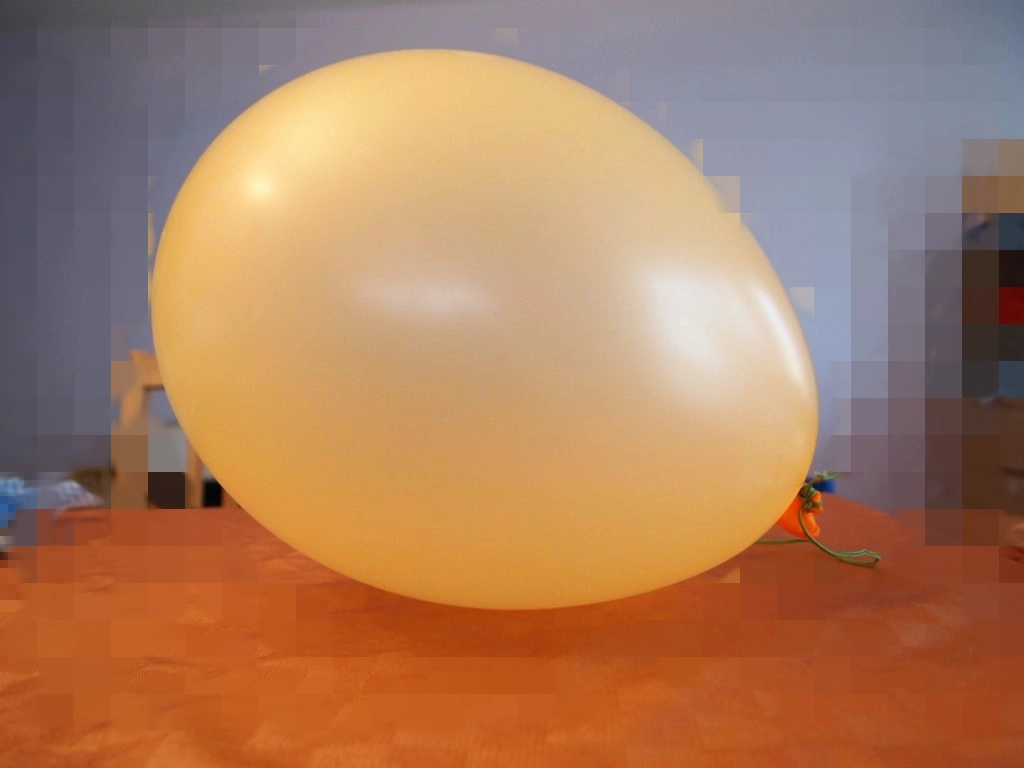
- Take colored paper of the desired color.
To get a bright and clear dark color, it is better to glue something colorless at first (oiled white or flesh-color paper practically does not give additional color), and with the last layers the desired color, without overlaping, for example, red on blue. The less dark pieces of paper are overlaped on each other, the less they create dark indistinct stripes-intersections.
Coat the paper with oil and tear it into pieces measuring 2-3 centimeters. - Cook the flour paste. It’s simple – all the work here is simple, but it takes time. Dilute two tablespoons of flour in a glass of cold water and pour into a saucepan with a boiling second glass of water. Stir, boil for 2-3 minutes. Cover with foil and set to cool (on the balcony to speed up the process).
- Pour the paste into a bowl, dip the pieces of paper into the paste, remove the excess on the edge of the bowl, put a piece of paper on the ball. For the first layer, the ball must be held in your hands – from the weight of the paper, it quickly turns over. For the rest of the layers, place it in a bowl. And so several layers (3-4). It is better to leave the brushes aside – it takes too long with them. After drying, remove the ball.



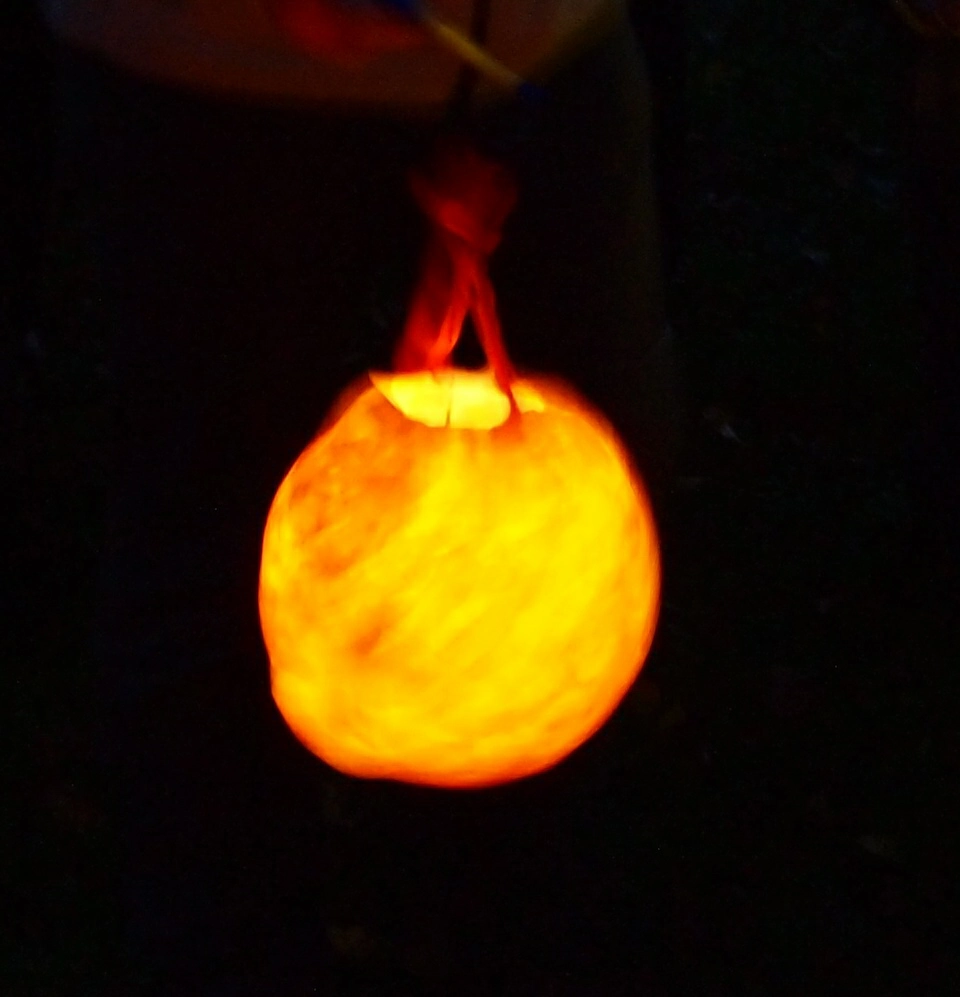
The paper mache lanterns can be the base for different animal lanterns. To do this, it is made in a suitable color (white for a cow, green for a frog or dinosaur, etc.) and paper heads and legs are glued to it.
How to make the legs of an animal lantern
Legs are collected from round beads or made of paper. To do this, two strips of paper are glued to each other at an angle of 90 degrees. Then you begin to bend them through each other, so that an accordion is obtained. The stripes must, of course, be long. And if the length is not enough, then they are extended by gluing the second part. Hooves or round paws are glued to the accordion.


Technique 2. Lampion lantern
You will need: lampion (seems to be in Ikea), paper.
For fish – about 100 small papier muffin forms, 2 foam balls for the eyes. Muffin forms can be found at Rossmann and DM.
A sheep needs cotton balls.
The lampions serves to replace the tiresome work of creating a lantern according to point 1. A variety of animals are made from it. Just type laterne + the desired animal in Google and surely someone has already done something similar. Among the most common are dinosaurs, cows, horses, fish, birds, unicorns.
The lampion either performs a head, and then ears and a mustache are attached to it. Or it performs a torso, and then legs, heads and tails are attached to it.
The fish is easy to do: we glue the muffin forms on the lampion. Then glue balls with a drawn eyes into two forms. We glue a heart-mouth and flippers.
Technique 3. Lantern paper bag
You take a paper bag and design it to your liking: paint, cut out shapes (month, stars) / windows, glue transparent colored paper to the the slots.
My version is made in the form of a house. What happened was not thought out in advance, and every step was forced. A few days before the “Saint Martin walk” the child brought from the garden a paper bag with a toothbrush. The local dental praxis taught teeth classes. The bag was white, with some kind of beast with a toothbrush painted on it and words written on it.
First, I painted the sides of the bag in different shades of blue. It turned out that the dental animal easily shines through the paint. I “kill” the beast by cutting out the windows and pasting them with pieces of paper. To make colored paper glow, it needs to be oiled.
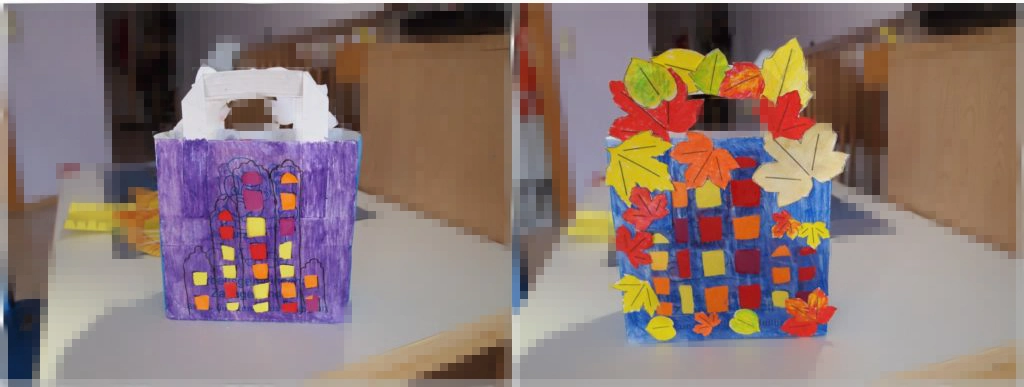
A new problem has arisen: the handles of the bag and pieces of paper are denser than the bag itself, and you can clearly see what is not beautiful. Therefore, having downloaded leaf templates from the Internet, I pasted over all unnecessary transparent places with leaves. Since the leaves are not oiled, they are opaque. The seemingly white leaf is tinted with a golden color in the hope of a special effect. The hope did not come true at all and I painted it yellow afterwards.
Net making time: 2-3 hours
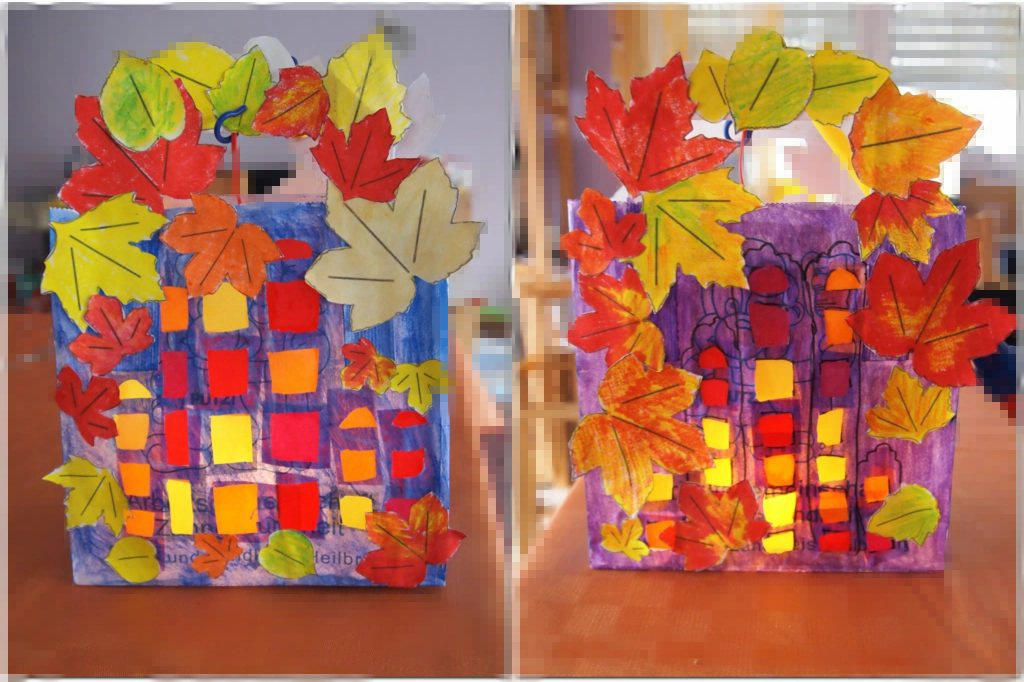
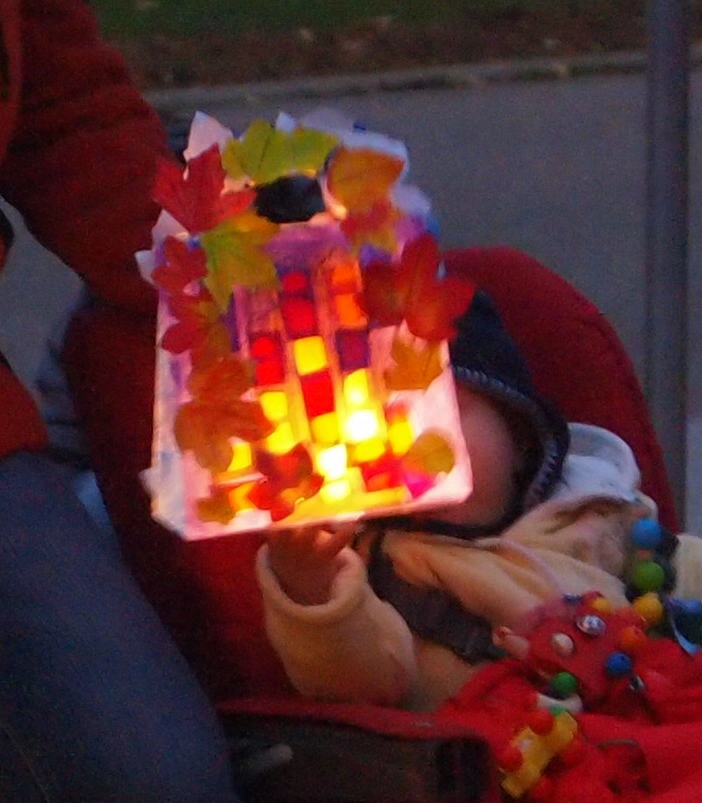
Next. In part 3 about polygons and cylindres (“cheese package”).
Part 1 Basic materials and lighting.
part 4 “Houses” and “drums”
part 5 Lanterns with silhouettes.
Saint Martin Feast and songs for it
Do you enjoy the site without cookies and maybe without ads? This means that I work for you at my own expense.
Perhaps you would like to support my work here.
Or Cookie settings change: round sign bottom left

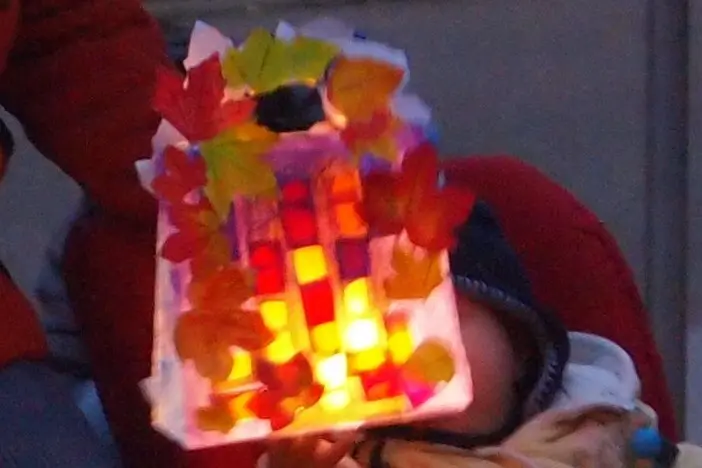
Imaginative